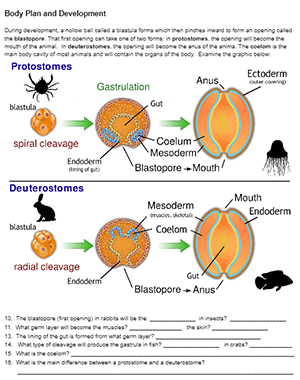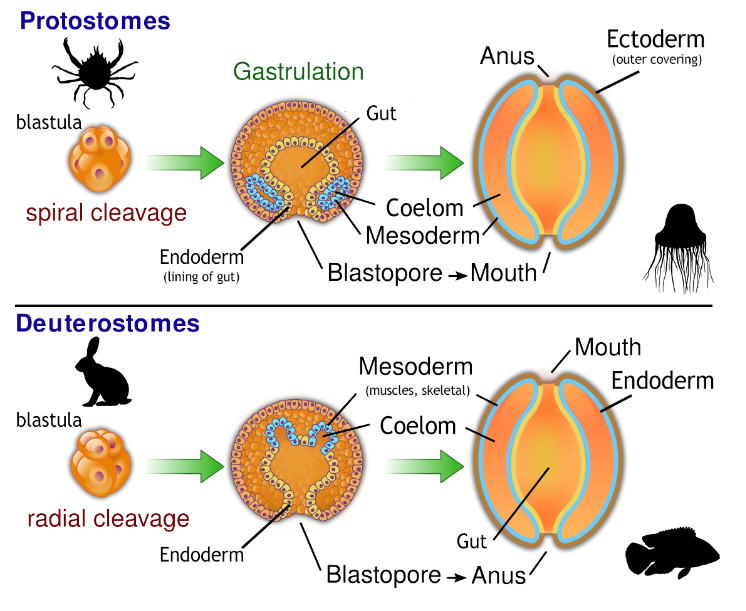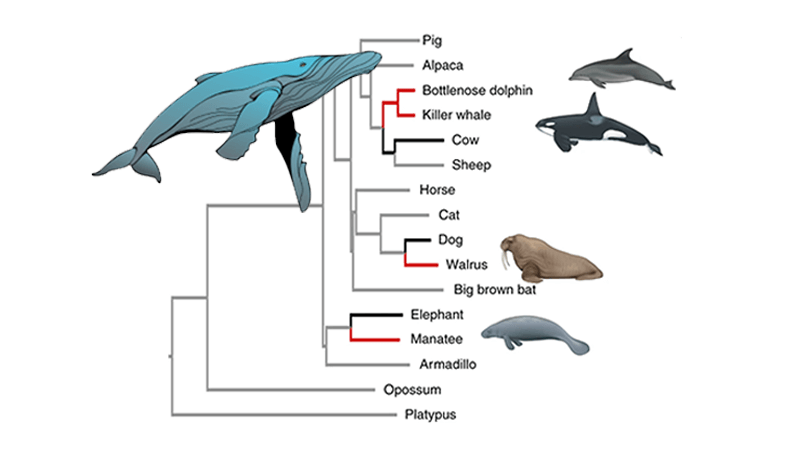
Most advanced biology classes won’t go into great deal on individual groups within the animal kingdom. Phylogeny, though, is a topic that will come up in any basic evolution unit. Here, I give my AP biology students a brief overview of the animal kingdom and some basic biology regarding invertebrates and vertebrates.
How organism’s develop from blastula to gastrula into one of two groups is another topic that fits into this unit. This worksheet includes and an image that compares a protostome to a deuterostome. Students must examine the graphic to answer questions about the differences in the two groups.
For example, in protostomes, the first opening of the blastopore becomes the mouth. In deuterostomes, the opening will become the anus. Protostomes undergo spiral cleavage, while deuterostomes undergo radial cleavage. In protostomes, the nervous system is ventral, while in deuterostomes, the nervous system is dorsal
When discussing development, you can even joke with students that all vertebrates, including humans, start off as a “butthole.” It’s good for a few laughs, at least! Or maybe a few groans…

The image also shows the three germ layers of the blastula (ectoderm, mesoderm, and endoderm) with a brief description about what these layers will become in developed organism. I modified the image from a Wikimedia commons file, and just added a few details. It’s short, probably best s a reinforcement to a larger discussion on the evolution of vertebrates.
If you want to tie phylogenies with genetics, I have another worksheet that focuses on genetics and mutations that are used to determine whale phylogeny.


